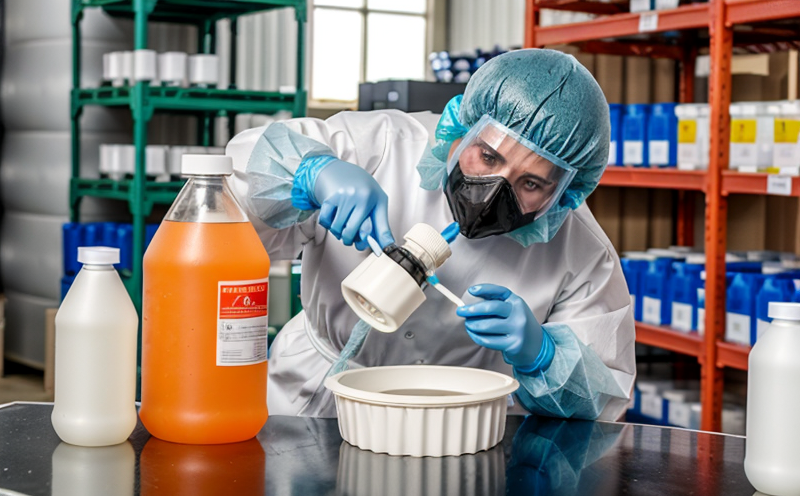FDA Guidance on Microbiological Quality of Food Packaging
The FDA's guidance on microbiological quality in food packaging is pivotal to ensuring that food products remain safe and uncontaminated from microbial hazards. The U.S. Food and Drug Administration (FDA) provides extensive guidelines through its website that address the control of microorganisms in direct contact with food, including packaging materials.
The FDA's approach focuses on preventing contamination by ensuring that all food-contact surfaces are free from harmful bacteria, viruses, and other pathogens. This involves a comprehensive understanding of potential points of microbial entry into the food supply chain and implementing measures to mitigate these risks. Packaging plays an essential role in this effort as it serves not only to contain but also protect the product during storage and distribution.
Compliance with FDA guidelines is critical for companies involved in food production, processing, packaging, and distribution. Failure to adhere can result in recalls, legal action, and significant financial losses. The FDA's regulations are based on current Good Manufacturing Practices (cGMP) outlined in 21 CFR Part 110.
Key aspects of microbiological safety testing for food packaging include:
- Testing for presence of Salmonella, Listeria, E. coli O157:H7
- Detection and quantification of coliform bacteria
- Assessment of microbial survival during storage conditions
- Evaluation of antimicrobial properties of packaging materials
The FDA emphasizes the importance of selecting appropriate testing methods that are validated according to international standards such as ISO 18765 and ASTM E2339. These standards provide protocols for microbiological sampling, transport media, and incubation conditions.
Understanding how different packaging materials interact with microorganisms is crucial for compliance. For instance, certain types of plastics may allow for better gas exchange which could lead to increased microbial growth under specific environmental conditions. Similarly, coatings used in paper-based products must be evaluated for their ability to inhibit microbial adhesion and proliferation.
Testing should not only focus on the packaging itself but also consider the entire food-contact surface. This includes seals, closures, labels, and any other components that come into direct contact with the product. By conducting thorough microbiological assessments early in the development process, manufacturers can identify potential issues before they become costly problems later.
Incorporating FDA guidance into your quality management system ensures ongoing compliance while protecting public health. Regular audits by independent laboratories specializing in this area help maintain consistency across batches and facilities.
Why Choose This Test
- Avoidance of Health Risks: Ensures that food packaging does not harbor harmful microorganisms which could contaminate the product.
- Legal Compliance: Helps businesses stay ahead of regulatory requirements and avoid potential fines or recalls.
- Consumer Confidence: Builds trust with consumers by demonstrating commitment to safety standards.
- Operational Efficiency: Identifies problems early in the production cycle reducing costs associated with rework or scrap.
- Sustainable Practices: Encourages use of eco-friendly materials that do not pose risks to human health.
Choosing FDA guidance for microbiological quality testing ensures a robust approach to maintaining safety and compliance throughout the supply chain. It provides peace of mind knowing that every step from manufacturing to final delivery meets stringent regulatory expectations.
Customer Impact and Satisfaction
Evaluating the microbiological quality of food packaging according to FDA guidelines directly impacts customer satisfaction by ensuring safe, reliable products. When consumers trust the safety of their food items, they are more likely to return to purchasing from reputable brands.
By adhering strictly to FDA recommendations, businesses demonstrate a commitment to excellence which enhances brand reputation and fosters long-term relationships with customers. This proactive stance also helps mitigate risks associated with potential contamination incidents that could damage brand integrity.
The implementation of these testing procedures not only protects end-users but also contributes positively towards sustainable practices within the industry. Using environmentally friendly packaging materials reduces waste while maintaining high standards for microbial safety.
Use Cases and Application Examples
| Application Case | Description |
|---|---|
| Packaging of Fresh Produce | Testing ensures that packaging used for fruits and vegetables does not introduce harmful bacteria during transportation or storage. |
| Ready-to-Eat Meals | Evaluates whether packaging materials could contribute to spoilage or cross-contamination in processed foods like salads, sandwiches, etc. |
| Baked Goods | Checks for any possibility of mold growth due to improper barrier properties of the packaging material. |
| Dairy Products | Assures that milk containers maintain sterility throughout distribution ensuring fresh and safe consumption. |
| Pharmaceutical Packaging | Verifies compatibility between medicine vials/capsules and their respective closures to prevent contamination during handling. |
| Pet Food Containers | Makes sure that pet food bags remain free from pathogens preventing illness in animals. |
These examples illustrate the diverse applications of microbiological safety testing across various sectors within the food industry. Each case highlights specific challenges related to microbial contamination and how rigorous adherence to FDA guidelines can effectively address these issues.





